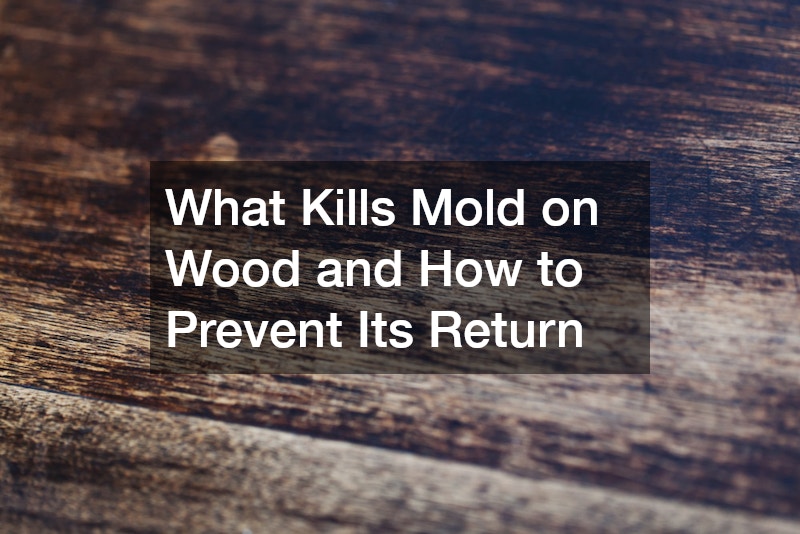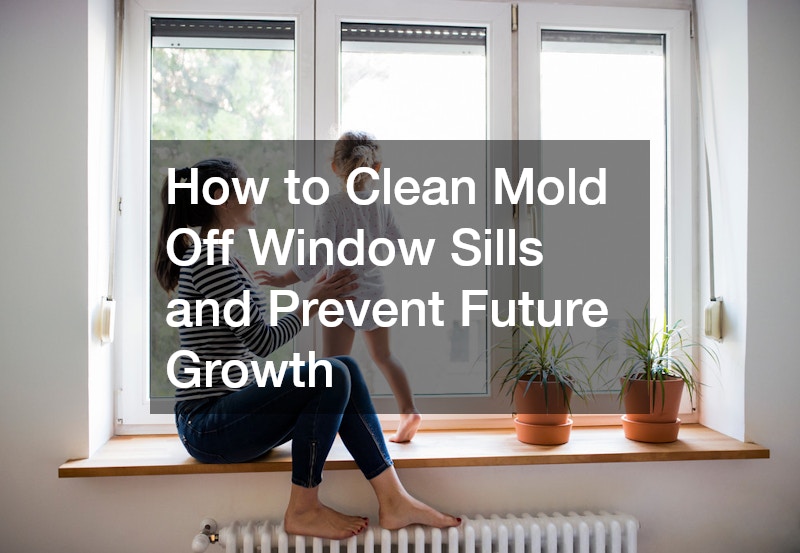Mold growth on wood surfaces can be unsightly and harmful to your health. It’s common in homes, particularly in damp areas such as basements, bathrooms, or kitchens, where moisture and humidity levels are high. Mold on wood ruins your home’s appearance and can weaken the structure over time. Understanding how to effectively remove mold and prevent it from returning is essential for maintaining a healthy living environment.
This guide will explore what kills mold on wood, the best techniques for mold removal, and how to keep your home mold-free in the future.
Why Mold Grows on Wood
Wood is a porous material, which means it can easily absorb moisture. When humidity levels are consistently high or water damage occurs, wood becomes a breeding ground for mold spores. Mold thrives in damp, dark, and warm environments, and once it begins to grow on wood surfaces, it can spread quickly if not addressed promptly.
The key to stopping mold growth is identifying and eliminating the source of moisture. Without moisture, mold cannot grow. This is why preventing leaks, controlling humidity, and improving ventilation are crucial in mold prevention.
What Kills Mold on Wood: Best Solutions
1. White Vinegar
White vinegar is one of the most effective natural solutions for killing mold on wood. Its antifungal properties work by penetrating the porous structure of wood to kill mold spores at their roots.
How to Use:
- Pour undiluted white vinegar into a spray bottle.
- Spray the affected wood surface generously.
- Let the vinegar sit for at least one hour to kill the mold.
- Use a soft brush to scrub the mold away, then wipe the surface with a damp cloth.
White vinegar kills existing mold and helps prevent it from returning, as its acidic nature creates an environment where mold struggles to grow.
2. Baking Soda and Water
Baking soda is another natural option for killing mold on wood. It’s safe to use, environmentally friendly, and effective at eliminating odors caused by mold.
How to Use:
- Mix one tablespoon of baking soda with a cup of water in a spray bottle.
- Spray the solution onto the moldy area.
- Scrub the wood gently with a brush to remove the mold.
- Wipe the surface with a damp cloth to clean off any residue.
- For added protection, spray the area with the solution again and let it dry.
This method is ideal for smaller mold outbreaks and helps deodorize the wood.
3. Hydrogen Peroxide
Hydrogen peroxide is a powerful antifungal agent that effectively kills mold on wood. It is particularly useful for tackling stubborn mold infestations and can also lighten mold stains on the surface of the wood.
How to Use:
- Use a 3% concentration of hydrogen peroxide.
- Apply it directly to the moldy area using a spray bottle or cloth.
- Let it sit for 10–15 minutes to break down the mold.
- Scrub the area with a brush or sponge to remove the mold.
- Wipe the surface clean with a damp cloth.
Hydrogen peroxide is especially useful for deeper mold growth, as it penetrates the wood more effectively than other solutions.
4. Tea Tree Oil
Tea tree oil is another natural solution that’s highly effective in killing mold on wood. It has antifungal and antibacterial properties, making it a great choice for preventing mold from spreading.
How to Use:
- Mix one teaspoon of tea tree oil with one cup of water.
- Spray the solution onto the moldy wood surface.
- Let the mixture sit for a few hours to allow the tea tree oil to work.
- Wipe the surface clean with a damp cloth.
While tea tree oil is more expensive than some other solutions, it’s very potent and long-lasting, making it an excellent natural remedy for mold.
5. Commercial Mold Removal Products
For severe mold infestations, you may need to use commercial mold removal products that are specifically formulated to kill mold. These products often contain stronger chemicals such as bleach, which can be highly effective for treating extensive mold growth.
How to Use:
- Follow the manufacturer’s instructions on the label.
- Apply the product to the affected area using a spray or brush.
- Allow the solution to sit for the recommended time to kill the mold.
- Scrub the surface with a brush to remove the mold and wipe away residue.
Be cautious when using commercial mold removers, especially with delicate wood surfaces, as some chemicals can be harsh.
How to Clean Mold Off Window Sills
In addition to dealing with mold on wood surfaces, it’s important to address mold in other areas of your home, like window sills. Mold on window sills is a common issue, especially in homes with poor ventilation and condensation.
Steps for Cleaning Mold Off Window Sills:
- Mix equal parts white vinegar and water in a spray bottle.
- Spray the solution generously on the moldy window sills.
- Let it sit for 30 minutes to loosen the mold.
- Use a brush or sponge to scrub away the mold.
- Wipe the surface clean with a damp cloth and ensure the area dries thoroughly.
This process effectively removes mold and prevents future outbreaks, keeping your home mold-free and healthier.
Preventing Mold Growth on Wood
Once you’ve successfully removed the mold, the next step is preventing it from returning. Mold prevention is all about controlling moisture levels and maintaining a clean, dry environment.
1. Fix Leaks and Address Moisture Issues
One of the primary causes of mold growth on wood is water leaks. Regularly check for leaks in your roof, windows, plumbing, and basement, and address any issues immediately. Properly sealed windows and doors will also help prevent moisture from seeping in.
2. Improve Ventilation
Good airflow is essential for preventing mold growth. Use exhaust fans in bathrooms and kitchens to reduce humidity. If certain areas of your home are prone to dampness, consider using a dehumidifier to keep humidity levels below 50%, the threshold for mold growth.
3. Use Mold-Resistant Paint
Applying mold-resistant paint can offer added protection for areas prone to moisture, such as bathrooms and basements. This type of paint contains antimicrobial properties that prevent mold from developing on surfaces.
4. Regular Cleaning and Maintenance
Regularly cleaning wood surfaces and checking for signs of mold growth can help you catch potential problems early. Dust and vacuum often, and watch for signs of excess moisture.
Conclusion
Effectively dealing with mold on wood requires the right cleaning solutions and proactive prevention measures. Whether using natural remedies like vinegar, baking soda, or hydrogen peroxide or opting for stronger commercial products, homeowners have several effective methods for removing mold. However, the best way to keep mold at bay is by preventing it from growing in the first place.
Controlling moisture, improving ventilation, and regularly inspecting areas prone to dampness are essential steps in maintaining a mold-free home. If you’re dealing with other mold-prone areas like window sills, following similar cleaning techniques can ensure your entire home remains a safe, healthy environment.
Remember, tackling mold early and maintaining good home hygiene will protect your home’s appearance and structure and safeguard your family’s health.


Leave a Reply